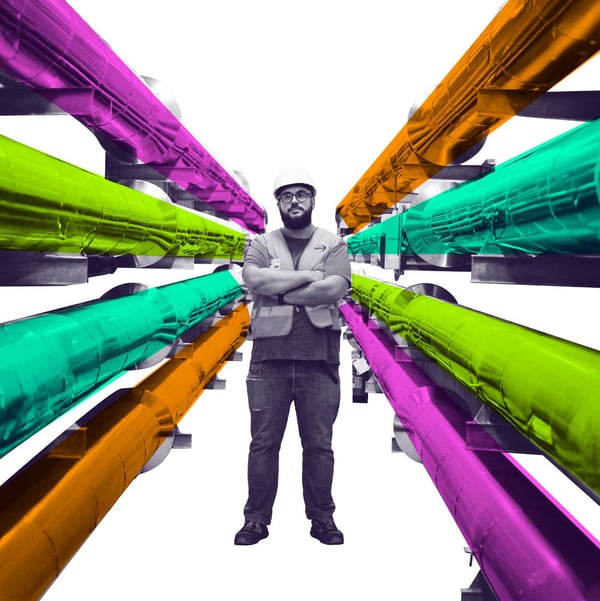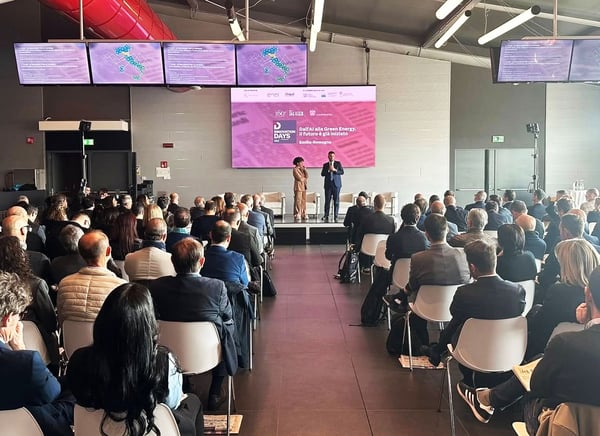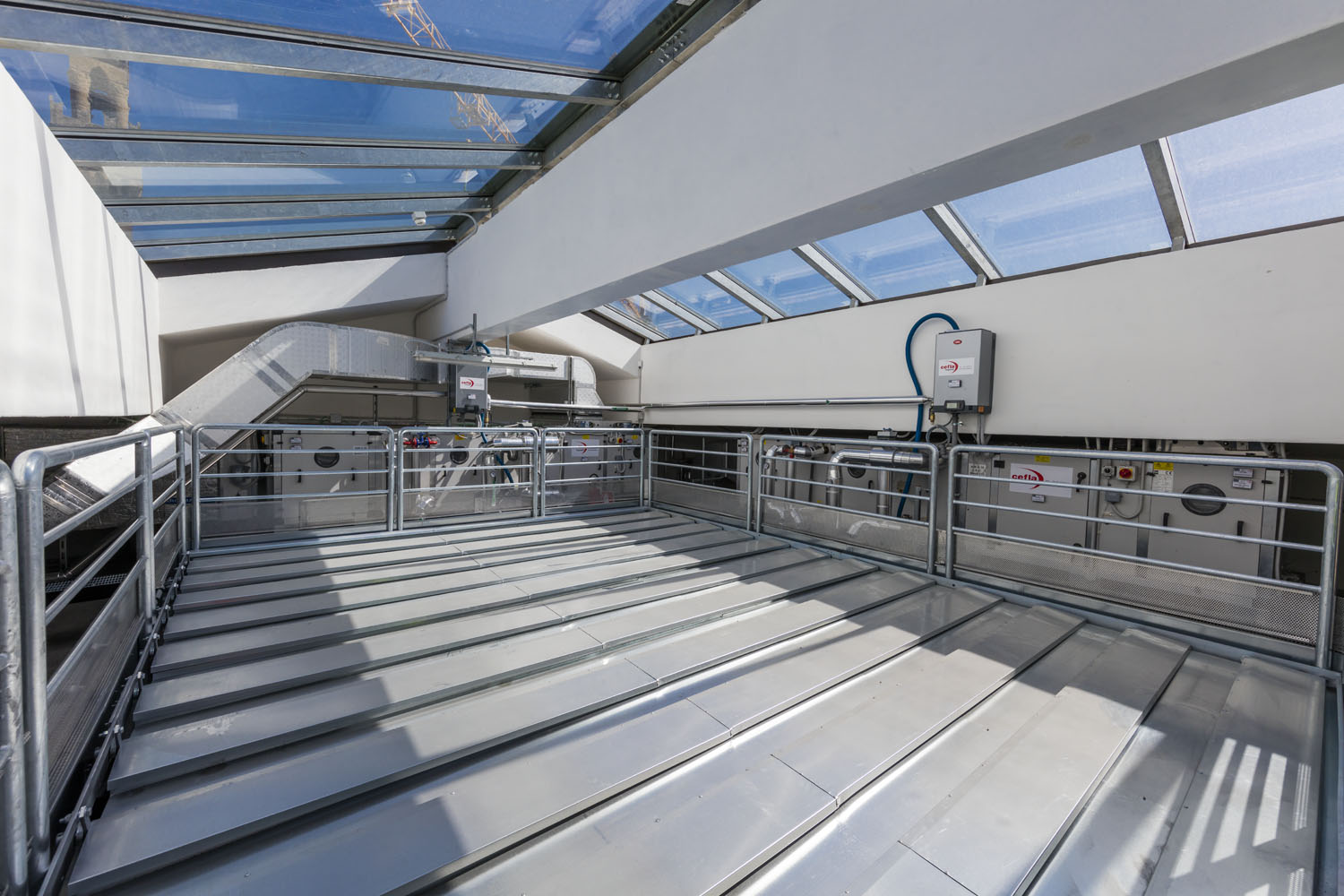Cefla will build a new 110 MW natural gas-fired plant for A2A to be installed at the existing Cassano d'Adda power plant.
The plant will be dedicated to electric power balancing service (Capacity Market) to ensure grid stability and balance renewable energy sources, which, in our country, are constantly expanding and developing.
The European Parliament wants "climate neutrality" by 2050, as it declared in the Green Deal, the strategic plan presented in December 2019; a goal that is expected to be achieved in several steps, one of them being the reduction, by 2030, of 55 percent of greenhouse gases.
Significant carbon dioxide emissions are to be blamed on coal, a fossil source that is an enemy of the environment and of humans: Europe today is home to more than 300 coal-fired power plants, which will therefore have to be decommissioned or converted.
In this scenario, Italy is leading the transition: today there are seven coal-fired power plants in Italy, and according to Pniec (the Ministry of Economic Development's National Integrated Energy and Climate Plan) they will have to be decommissioned or converted by 2025.
However, a zero-emission world will not be achieved overnight: in fact, the term 'transition' implies a gradual transition from one condition to another.
Gradually getting out of coal also coincides with the expansion of the renewable energy sector, which today is steadily growing and developing.
And this is where the Capacity Market, the electric power balancing service aimed at ensuring grid stability, comes in.
The Capacity Market is a mechanism operated by Terna, the national transmission system operator, designed to thus ensure system stability to support the expected increase in domestic solar and wind power generation, which, by their nature, are not programmable.
Indeed, the capacity of coal-fired plants that will be decommissioned by 2025 will have to be covered by additional new generation capacity to ensure the adequacy of the electricity system. The strong development of renewable energy sources (RES) in Italy and the further increase envisaged by the PNRR as part of the Energy Transition Plan underway at the European level, therefore, makes it necessary in parallel to build a series of reserve power plants, capable of coming into service quickly to ensure continuity of service, stability and security of the grid during periods when energy production from renewable sources suffers reductions for climatic reasons.
It is in this context that A2A has initiated the construction of the plant that we will build in partnership with Wärtsilä, with an electric power capacity of 110MW, designed to ensure a reserve for the grid in case of need, and therefore ready to come into operation in just a few seconds.
The technology applied involves the use of internal combustion engines built by Wärtsilä powered by natural gas, which are highly suitable for this type of service because they ensure fast starts and low emissions.
Of the various available fossil fuels, natural gas is the one with the lowest emission impact, and therefore, in terms of cost-benefit ratio, methane is considered a good solution for the energy transition. This is also demonstrated by Europe's recent green light for gas as a useful energy source for the ecological transition, which gives further impetus to methane power plants, including fast power plants that start up in seconds just like the power plant we will build in Cassano d'Adda for A2A.
Cefla will specifically deal with the complete turnkey development of the project engineering, construction, installation and subsequent testing of the new Plant that will replace a previous existing plant.
The new plant is configured as a modular plant based on six Wärtsilä 50SG natural gas engines, divided into two engine rooms, and will become operational in 2023. When completed, it will be one of the most important "power reserve" plants in Italy operating with gas-fueled internal combustion engines.
In recent years Cefla's efforts have focused strongly on the development of large power plants featuring high efficiency and sustainability, serving district heating networks that provide lighting and heating to hundreds of thousands of people, such as the power plant built in Rome (Tor di Valle district) for Acea, where all the heat feeds the city's district heating network serving about 100,000 residents. Or the 50 MW power plant being built in Cottbus (Germany), serving the city's district heating, a plant that replaces the existing coal-fired power plant in its entirety.
IN-DEPTH
Green New Deal
"Climate change is the greatest challenge of our time, and it is also an opportunity to build a new economic model "- reports the Green New Deal, the plan of economic and social reforms put in place to address environmental degradation and economic and social inequalities, which threaten the entire world.
On the current of the American one, the European Green New Deal is based on well-informed and grounded studies about global warming trends. The first significant step toward the Green New Deal was written on November 28, 2018, when the European Commission presented a document entitled "A Clean Planet for All - Europe's Long-term Strategic Vision for a Prosperous, Modern, Competitive and Climate Neutral Economy." In this document, it analyzed, with scientific evidence, the effects of climate change in Europe, which has led in the last 20 years to record the 18 hottest years on record, setting the stage for a general deterioration of the environment.
At the same time, strategies and activities are being developed to set the course for climate and energy policies, specifying, in effect, the commitment, in the long term, about the temperature containment goals established by the Paris Agreement, and consistent with the guidelines for sustainable development dictated by the United Nations. Officially enshrining the EU's concrete commitment comes with the entry into force of Directive 2018/2001, which aims to accelerate the transition from traditional fuels to renewable sources.
With a view to the Green New Deal, the text aims to identify a set of coordinated measures and instruments, implementing the "Fit for 55" package.
This package contains legislative proposals to achieve the Green Deal goals by 2030. Specifically, the reduction of greenhouse gas emissions by 55 percent from 1990 levels, with the goal of achieving "carbon neutrality" by 2050.
Published on July 04, 2025





